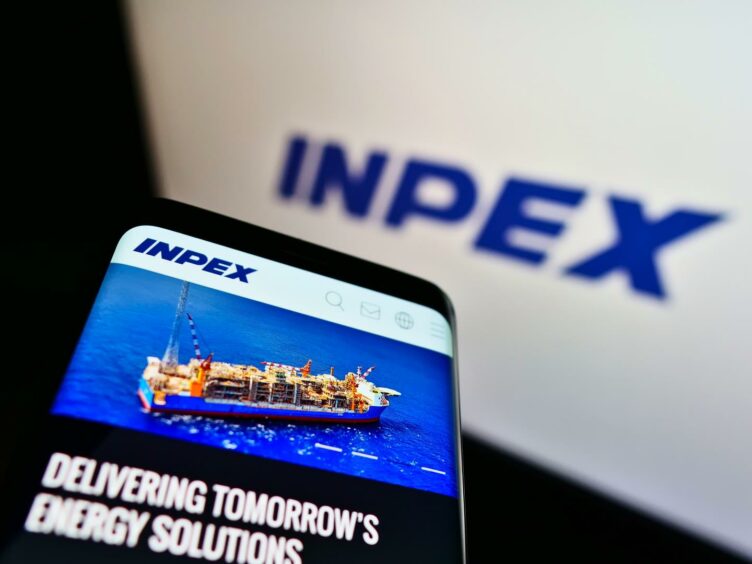
Japan’s Inpex (TYO:1605) and partner TotalEnergies (LON:TTE) have won a key greenhouse gas storage (GHG) permit offshore Australia that could help a plan to bury emissions from liquefied natural gas (LNG) export projects in northern Australia.
Significantly, Inpex could now spearhead an effort to develop a regional carbon capture and storage (CCS) hub across acreage that is analogous with one of the world’s most successful CCS projects.
Inpex has been awarded permit G-7-AP in the Bonaparte basin. Aside from France’s TotalEnergies, Australia’s Woodside Energy (ASX:WDS), is also a partner in the permit that stretches over 27,500 square kilometres and covers 348 blocks.
The permit is close to the Petrel sub-basin, the Bayu Undan field offshore East Timor, the Barossa field, as well as Inpex and TotalEnergie’s Ichthys field. Geoscience Australia has identified this basin as one of the most promising in Australia for carbon dioxide (CO2) storage. Indeed, it holds highly permeable sandstones with a gentle uniform dip across the basin.
Moreover, the basin is seen as analogous to the geological setting of Sleipner CCS offshore Norway, the first dedicated aquifer-based storage project in the world. Sleipner is the world’s first industrial-scale CCS project for the purpose of carbon emission abatement and has been successfully injecting 1 million tonnes per year (t/y) since 1996, as part of a gas field development.
Next year, Inpex plans to start drilling appraisal wells and shooting seismic across its permit as part of a six-year work programme commitment.
Inpex, which operates the giant Ichthys LNG export complex, sees this acreage as a promising setting for a large-scale injection project, compatible with a Darwin-based storage hub.
Regional CCS Hub
In February, Inpex confirmed it aims to lead an effort to build one of the world’s largest carbon capture and storage (CCS) facilities near Darwin, Australia, as it strives to hit its Net Zero 2050 pledge and decarbonise its business.
Aside from Inpex’s proposed storage project in the Bonaparte basin, Santos (ASX:STO) has also proposed a giant CCS project at Bayu Undan, offshore East Timor – also known as Timor Leste – while Origin Energy is exploring an onshore carbon capture utilisation and storage (CCUS) site at the Beetaloo basin. These various sites could form a regional storage hub.
The hub itself would not be a big industrial complex. Fundamentally, the hub will be nothing more than pipes that connect nodes together – big emitters like the Santos-operated Darwin LNG and Inpex’s Ichthys LNG plants – to storage sites. The hub will be more of a commercial construct that links big emitters with various storage sites rather than a physical manifestation.
There is also talk of an import facility in Darwin to import CO2 – that will be stored within the hub – from large LNG consumers in South Korea and Japan.
Japan’s three energy companies – JERA, Tokyo Gas and Inpex – have said that they plan to join the proposed CCS project led by Santos at Bayu Undan offshore East Timor.
But the Bayu Undan project, which will involve cross border disposal of CO2 has massive regulatory hurdles to cross before it can be implemented. Santos is planning to send emissions from its Barossa gas field, under development in Australia, to Bayu Undan in East Timor, for storage. Moreover, sending carbon waste imported to Australia from Japan and South Korea and subsequently transporting it to Bayu Undan via pipeline could also be complicated from a regulatory perspective.
A source close to the proposed storage projects told Energy Voice that it is likely that Santos will try to get an option to send CO2 from Barossa to Inpex’s proposed Bonaparte storage site. “I don’t think Santos will put all their eggs in the Bayu Undan basket as it is complex technically and regulatory,” noted the source, adding that Inpex would probably be seeking an option to use Bayu Undan for its emissions too.
Australia Offshore Greenhouse Gas Acreage Release
Aside from Inpex, Woodside was also awarded a GHG acreage permit as part of the 2021 release announced last December. Woodside won the G-8-AP permit in the Browse basin offshore Western Australia that stretches across 3,476 sq kms and over 42 blocks. The acreage lies directly on top of Woodside’s Browse fields, which could be used to backfill the North West Shell LNG export plant. Woodside has said that CCS would be incorporated at Browse, if it eventually gets developed.
The government hopes its first GHG storage acreage release since 2014 will help provide a pathway for potential CCS projects. The offshore bidding round, which closed in March, covered five areas for prospective GHG storage offshore the Northern Territory and Western Australia in the Bonaparte, Browse and Northern Carnarvon basins. So far, only two awards have been listed on National Electronic Approvals Tracking System. An official government announcement of the results is expected later this week.
